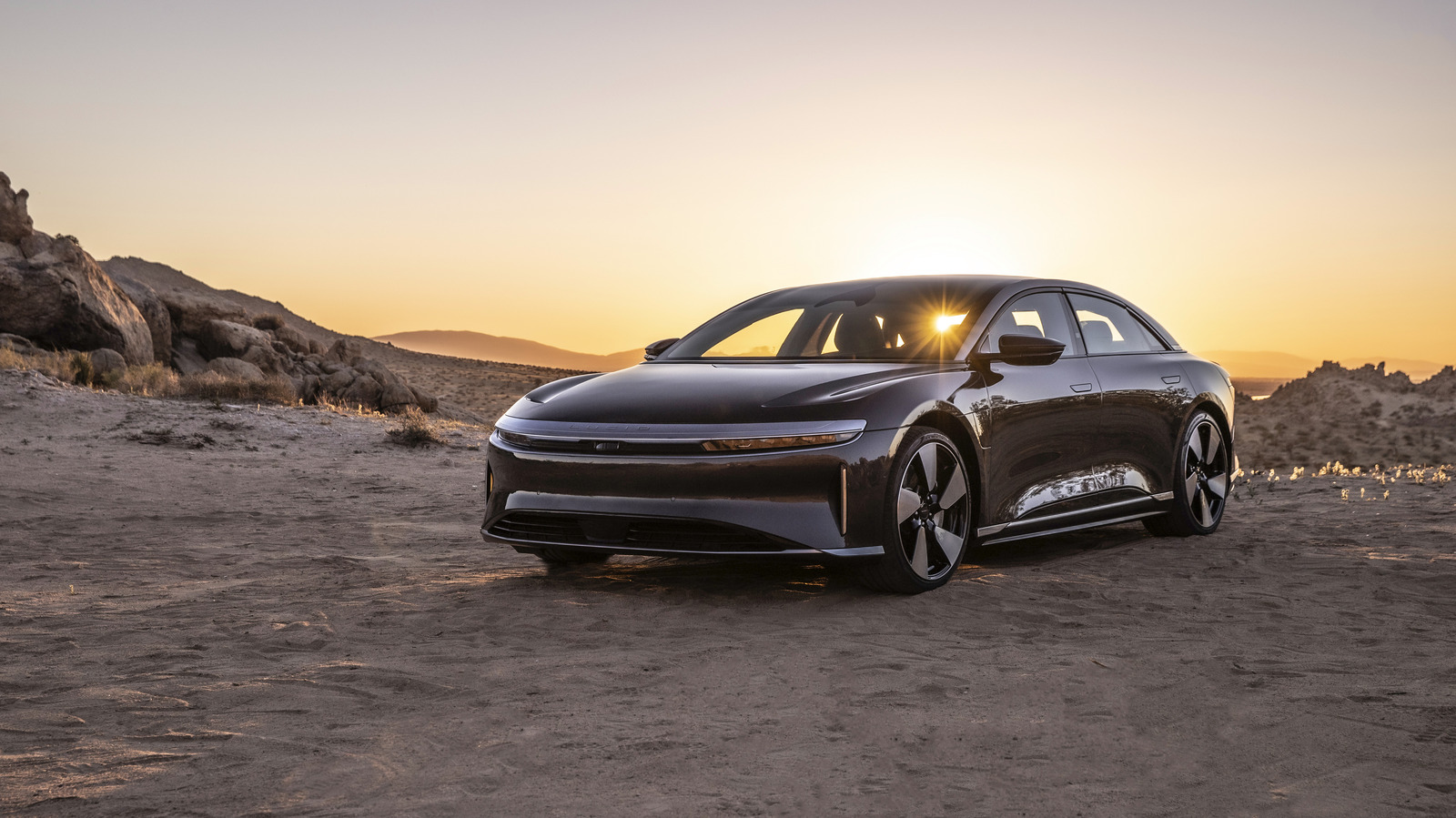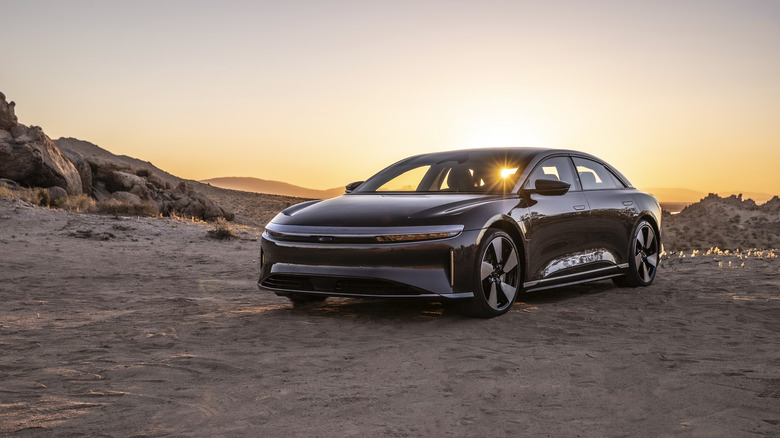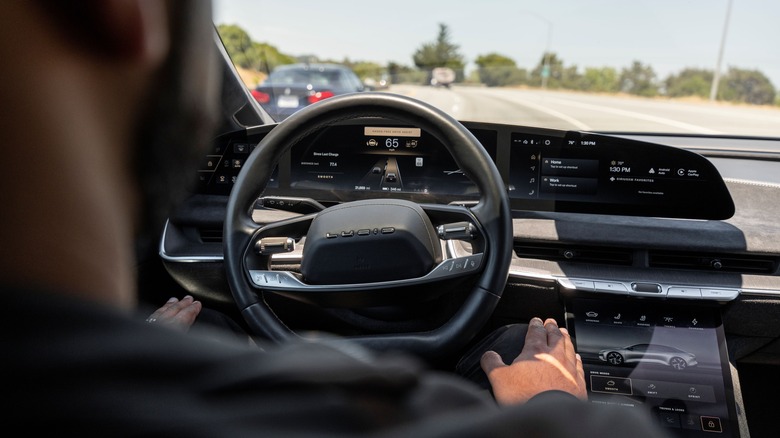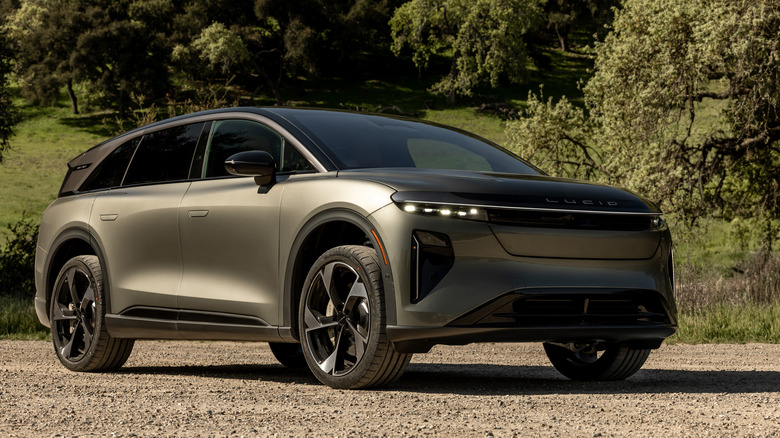When it comes to fully self-driving cars, we’re dealing with a two-horse race: Waymo vs. Tesla. And in that competition, Waymo has a huge lead, thanks to a heavy investment in Lidar, or laser radars. Tesla is relying on cameras and computing power to play catch up. Importantly, both companies are aiming to establish profitable robotaxi services. Meanwhile, other automakers simply want to enhance their driver-assist features, and Lucid is now doing just that, adding hands-free capability to its DreamDrive Pro system.
A lot of carmakers are content to improve their driver-assist suite without taking the plunge on full autonomy. They aren’t in the robotaxi game, and their objective is basically to stay competitive. For Lucid, its luxurious Air sedan and Gravity SUV need a hands-free option, as well as a lane-change assist feature. According to Lucid, owners of the Air will have access to the improvements as an over-the-air update on July 30, and it’s coming to the Gravity later this year.
Driver-assist is nowhere near self-driving
These types of Level 2 driver-assist technologies are pitched as stress-relievers rather than driver-eliminators. It’s best to consider them as a form of advanced adaptive cruise control that allows the driver to take their hands off the wheel, change lanes without actively steering, and subject themselves to attention monitoring. Let your eyes wander, and the vehicle will prompt you to get those hands back on the wheel.
Cool stuff, but not cheap. DreamDrive Premium is standard on all Air trims; going to Pro is $2,500 more (the exception being the fully kitted $250,000 Air Sapphire). Tesla’s “Autopilot” with “Full-Self-Driving” (FSD) is an $8,000 add-on at purchase, or a $99-per-month subscription if you want it later, and it doesn’t actually permit hands-free driving. I’ve always been on the fence about whether these systems are worth it. In a General Motors vehicle equipped with Super Cruise, I’ve definitely de-stressed while feeling entirely safe. In a Tesla, I’ve had more uneven experiences, although it’s been a while since I sampled the latest and greatest that “Autopilot”/FSD delivers. Lucid’s system is certainly comprehensive, including lidar, radar, visible-light cameras, surround-view cameras, and ultrasonic sensors, according to the company.
Less stressful for the driver, more stressful for the automaker
A startup like Lucid is under immense pressure to keep pace with the rest of the industry while also presenting itself as an EV innovator. Advanced Driver Assistance Systems (ADAS) are becoming ubiquitous and are a marker of how cars are becoming more futuristic. They aren’t a last-century industrial technology.
So Lucid’s customers expect that an EV costing more than $100,000 (for the Air Grand Touring trim) is going to be state-of-the-art, even if the company needs to manage the numerous challenges of creating a carmaker from scratch. Do customers think their Lucid needs to do everything a Tesla can? Maybe not. But as the company noted in its press release announcing the new features, it wants to push the story of its vehicles being “software defined.” It also wants to retain an autonomous-mobility subplot.
On the other hand, it’s great to see Lucid continuing to go after Tesla at every opportunity and striving to maintain technological parity. The cheapest Gravity SUV is $80,000, so Lucid isn’t encumbered by having to make every decision based on affordability. What we have here are unabashedly premium EVs. They actually should have every available high-tech bell and whistle, even if full autonomy isn’t quite yet in the picture.





